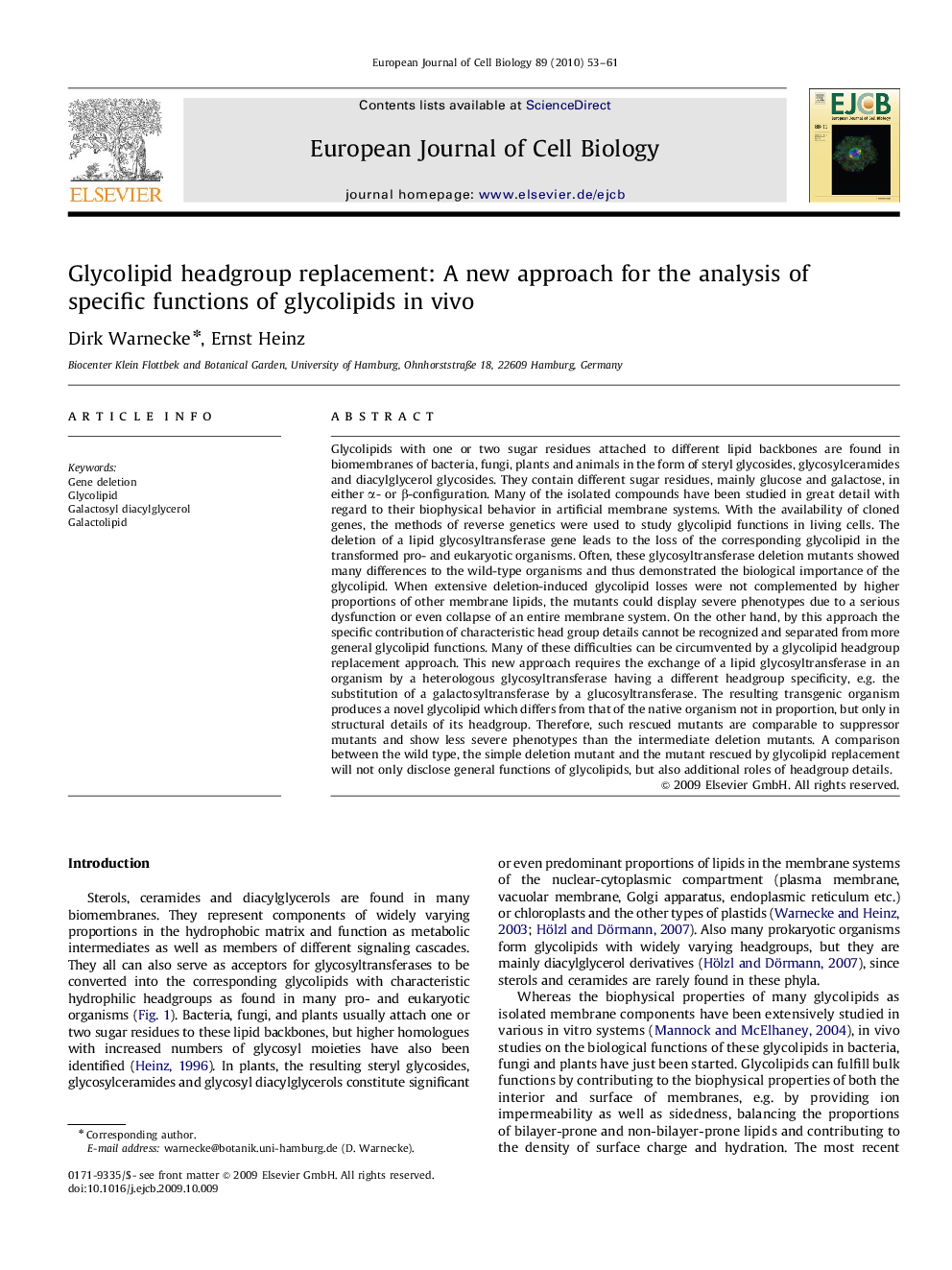| کد مقاله | کد نشریه | سال انتشار | مقاله انگلیسی | نسخه تمام متن |
|---|---|---|---|---|
| 2178848 | 1549729 | 2010 | 9 صفحه PDF | دانلود رایگان |

Glycolipids with one or two sugar residues attached to different lipid backbones are found in biomembranes of bacteria, fungi, plants and animals in the form of steryl glycosides, glycosylceramides and diacylglycerol glycosides. They contain different sugar residues, mainly glucose and galactose, in either α- or β-configuration. Many of the isolated compounds have been studied in great detail with regard to their biophysical behavior in artificial membrane systems. With the availability of cloned genes, the methods of reverse genetics were used to study glycolipid functions in living cells. The deletion of a lipid glycosyltransferase gene leads to the loss of the corresponding glycolipid in the transformed pro- and eukaryotic organisms. Often, these glycosyltransferase deletion mutants showed many differences to the wild-type organisms and thus demonstrated the biological importance of the glycolipid. When extensive deletion-induced glycolipid losses were not complemented by higher proportions of other membrane lipids, the mutants could display severe phenotypes due to a serious dysfunction or even collapse of an entire membrane system. On the other hand, by this approach the specific contribution of characteristic head group details cannot be recognized and separated from more general glycolipid functions. Many of these difficulties can be circumvented by a glycolipid headgroup replacement approach. This new approach requires the exchange of a lipid glycosyltransferase in an organism by a heterologous glycosyltransferase having a different headgroup specificity, e.g. the substitution of a galactosyltransferase by a glucosyltransferase. The resulting transgenic organism produces a novel glycolipid which differs from that of the native organism not in proportion, but only in structural details of its headgroup. Therefore, such rescued mutants are comparable to suppressor mutants and show less severe phenotypes than the intermediate deletion mutants. A comparison between the wild type, the simple deletion mutant and the mutant rescued by glycolipid replacement will not only disclose general functions of glycolipids, but also additional roles of headgroup details.
Journal: European Journal of Cell Biology - Volume 89, Issue 1, January 2010, Pages 53–61